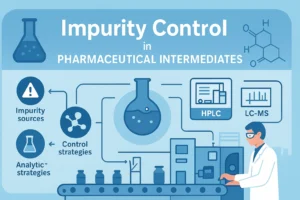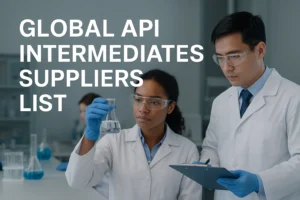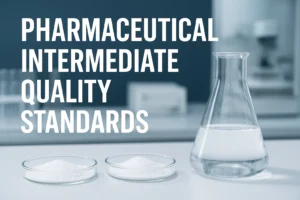Overview
The avibactam sodium API market is heating up as hospitals worldwide scramble to counter antibiotic-resistant superbugs. The global fight against antibiotic-resistant superbugs has propelled avibactam sodium (CAS:1192491-61-4) into the spotlight.
As a non-β-lactam β-lactamase inhibitor, this innovative API restores the efficacy of cephalosporins against resistant pathogens. But what does its market landscape really look like for pharmaceutical developers and API buyers? Let’s dissect the realities beyond the market.
Market Overview: Where Demand Meets Complexity
Valued at $280 million in 2023, the avibactam sodium API market is projected to grow at 8.7% CAGR through 2030 (Grand View Research). Key drivers include:
- Global antibiotic resistance crisis: 1.27M deaths directly attributed to resistant infections in 2022 (WHO)
- Combination therapy adoption: 94% of ceftazidime-avibactam prescriptions in US hospitals
- Regulatory incentives: FDA’s LPAD pathway accelerating approvals for resistant infection treatments
Regional hotspots:
- North America: 42% market share (strict stewardship programs)
- Asia-Pacific: Fastest growth (11.2% CAGR) driven by India/China API production
- Europe: EMA’s 2023 guidelines pushing for fixed-dose combinations
Regional opportunities: Differentiated paths between emerging and developed markets
- European and American markets: Focusing on compliance and supply chain stability, API companies with DMF filing capabilities are more likely to obtain long-term orders;
- Asia-Pacific market: India and China are taking over 70% of the global API capacity transfer with their engineer bonus and industrial chain supporting advantages;
- Emerging markets: Southeast Asia and the Middle East have a strong demand for cost-effective APIs, but they need to cope with the challenges of differences in registration regulations in various countries.
Future trends: Innovation and cooperation reshape the industrial ecology
- Continuous flow production technology: precise temperature and time control through microreactors can increase the total yield by more than 20%;
- AI-assisted process optimization: machine learning models can predict the impurity generation path and shorten the R&D cycle;
- The rise of the CDMO model: transformation from “single API supply” to “process development + registration application + commercial production” one-stop service.
Formulation Challenges Driving API Innovation
1. Stability Optimization
Avibactam sodium’s hygroscopic nature demands specialized handling:
- Moisture control: <0.5% water content (Karl Fischer)
- Packaging: Double HDPE drums with nitrogen purge (vs standard single packaging)
- Our solution: Proprietary co-crystallization technique extends shelf life to 36 months
2. Combination Compatibility
Successful pairing with β-lactams requires:
- pH matching: 6.0-6.5 range for ceftazidime compatibility
- Lyophilization expertise: 15% faster reconstitution time vs competitors
- Case study: Reduced particulate matter in vials by 78% through optimized API milling
3. Cost-Effective Synthesis
Traditional routes vs our approach:
Step | Conventional Method | Our Innovation |
Cyclization | Hünig’s base, 72% yield | Phase-transfer catalysis, 89% yield |
Sodium Salt Formation | 3 recrystallizations | Single-step antisolvent precipitation |
Impurity Control | 1.2% des-avibactam | 0.3% via continuous chromatography |
Regulatory Hurdles: Beyond GMP Compliance
1. USFDA Expectations:
- 3 consecutive validation batches with ≤2% variability
- Full genotoxic impurity profile per ICH M7
2. EU GMP Annex 2:
- Dedicated β-lactam production lines
- <0.001% cross-contamination verification
3. India CDSCO:
- Mandatory stability data at 30°C/75% RH
Our facilities maintain separate cephalosporin/avibactam suites with real-time air monitoring
Supplier Landscape: Choosing Your Partner Wisely
Top 3 evaluation criteria:
1. Technical capability:
- Can they provide DMF Type II with 3D crystal structure data?
- Do they offer combination API pre-mixing services?
2. Quality systems:
- ISO 9001:2015 vs GMP-only certification
- Microbial control in non-sterile API production
3. Supply chain resilience:
- Dual sourcing for key starting materials (e.g., (2S,5R)-6-(benzyloxy)-7-oxo-1,6-diazabicyclo[3.2.1]octane-2-carboxamide)
- Regional stockpiling strategies
Why Our Avibactam Sodium Stands Out
As early adopters of avibactam manufacturing (since 2018 pre-approval access programs), we deliver:
1. Technical edge:
- Enhanced solubility: 550 mg/mL in WFI (vs standard 450 mg/mL)
- Lower endotoxins: <0.05 EU/mg (meets injectable-grade specs)
2. Regulatory preparedness:
- Active DMFs in US, EU, Japan
- Successful 12 FDA/EMA audits since 2020
3. Partnership flexibility:
- From 5kg clinical batches to 200kg/month commercial supply
- Custom co-formulated APIs (ceftazidime/avibactam ready-to-fill vials)
In Conclusion
The avibactam revolution isn’t coming—it’s here. As resistant infections outpace drug development, those controlling quality API supply will literally hold lives in their hands. The question isn’t whether to engage with this market, but how quickly you can secure reliable partners.
When you’re ready to move beyond talk and into action, our synthesis experts are on standby. Whether you are a pharmaceutical company seeking a stable supply chain or a research and development institution planning to develop an innovative drug pipeline, we can provide solutions ranging from grams to tons.
Click here to consult and get exclusive cooperation solutions.
- Batch-specific COAs with Raman spectral mapping
- Tech transfer support for ANDA/NDA filings
- Custom stability protocols (ICH/non-ICH conditions)



